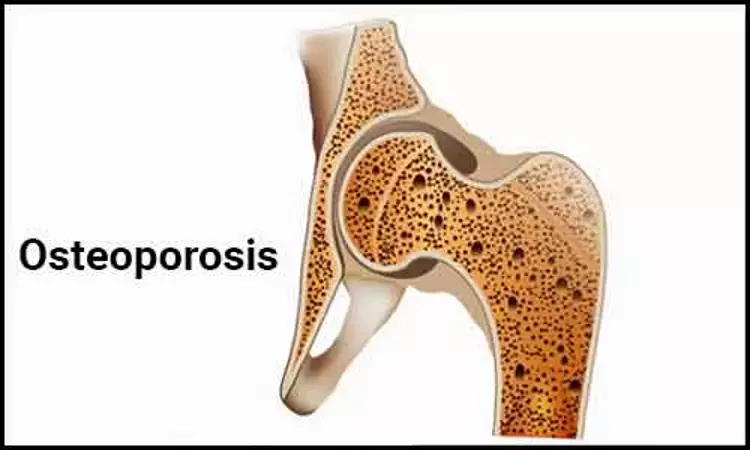- Home
- Medical news & Guidelines
- Anesthesiology
- Cardiology and CTVS
- Critical Care
- Dentistry
- Dermatology
- Diabetes and Endocrinology
- ENT
- Gastroenterology
- Medicine
- Nephrology
- Neurology
- Obstretics-Gynaecology
- Oncology
- Ophthalmology
- Orthopaedics
- Pediatrics-Neonatology
- Psychiatry
- Pulmonology
- Radiology
- Surgery
- Urology
- Laboratory Medicine
- Diet
- Nursing
- Paramedical
- Physiotherapy
- Health news
- Fact Check
- Bone Health Fact Check
- Brain Health Fact Check
- Cancer Related Fact Check
- Child Care Fact Check
- Dental and oral health fact check
- Diabetes and metabolic health fact check
- Diet and Nutrition Fact Check
- Eye and ENT Care Fact Check
- Fitness fact check
- Gut health fact check
- Heart health fact check
- Kidney health fact check
- Medical education fact check
- Men's health fact check
- Respiratory fact check
- Skin and hair care fact check
- Vaccine and Immunization fact check
- Women's health fact check
- AYUSH
- State News
- Andaman and Nicobar Islands
- Andhra Pradesh
- Arunachal Pradesh
- Assam
- Bihar
- Chandigarh
- Chattisgarh
- Dadra and Nagar Haveli
- Daman and Diu
- Delhi
- Goa
- Gujarat
- Haryana
- Himachal Pradesh
- Jammu & Kashmir
- Jharkhand
- Karnataka
- Kerala
- Ladakh
- Lakshadweep
- Madhya Pradesh
- Maharashtra
- Manipur
- Meghalaya
- Mizoram
- Nagaland
- Odisha
- Puducherry
- Punjab
- Rajasthan
- Sikkim
- Tamil Nadu
- Telangana
- Tripura
- Uttar Pradesh
- Uttrakhand
- West Bengal
- Medical Education
- Industry
Bisphosphonate therapy for over an year may prevent fractures in postmenopausal women with osteoporosis: JAMA

USA: A recent study in JAMA Internal Medicine has suggested that bisphosphonate therapy is most likely to benefit women with osteoporosis having a life expectancy greater than 12.4 months.
The meta-analysis found that the time to benefit (TTB) of bisphosphonate therapy was 12.4 months for preventing 1 nonvertebral fracture per 100 postmenopausal women with osteoporosis.
The clinical decision for the initiation of bisphosphonate therapy for osteoporosis treatment requires balancing shorter-term harms and burdens (eg, severe musculoskeletal pain or gastroesophageal irritation) with longer-term benefits for reducing potential fractures. William James Deardorff, University of California, San Francisco, and colleagues, therefore, aimed to assess the time to benefit of bisphosphonate therapy for the prevention of nonvertebral and other fractures among postmenopausal women with osteoporosis in a meta-analysis of 10 randomized clinical trials.
For this purpose, the researchers identified randomized clinical trials (RCTs) involving postmenopausal women with a diagnosis of osteoporosis based on existing vertebral fractures or bone mineral density T scores of −2.5 or lower. The selection process was focused on studies of alendronate, risedronate, and zoledronic acid because they are guideline-recommended first-line agents for reducing nonvertebral fractures.
The primary outcome was the time to 3 different ARR thresholds (0.002, 0.005, and 0.010) for the first nonvertebral fracture.
Of 67 full-text articles identified, 10 RCTs comprising 23 384 postmenopausal women with osteoporosis were included. Among the studies, the number of participants ranged from 994 to 7765, with mean age ranging from 63 years to 74 years and follow-up duration ranging from 12 to 48 months.
Key findings of the study include:
- The pooled meta-analysis found that 12.4 months were needed to avoid 1 nonvertebral fracture per 100 postmenopausal women receiving bisphosphonate therapy at an ARR of 0.010.
- To prevent 1 hip fracture, 200 postmenopausal women with osteoporosis would need to receive bisphosphonate therapy for 20.3 months at an ARR of 0.005.
- In addition, 200 postmenopausal women with osteoporosis would need to receive bisphosphonate therapy for 12.1 months to avoid 1 clinical vertebral fracture at an ARR of 0.005.
"These results can be used to inform discussions between clinicians and older postmenopausal women who seek to balance the potential immediate harms and burdens of bisphosphonate therapy with the delayed benefit of decreased fracture risk," the authors wrote.
"Because most postmenopausal women have a life expectancy that is substantially greater than 12.4 months, the results suggest that bisphosphonate therapy is likely to be beneficial for most older women with osteoporosis," they concluded.
Reference:
Deardorff WJ, Cenzer I, Nguyen B, Lee SJ. Time to Benefit of Bisphosphonate Therapy for the Prevention of Fractures Among Postmenopausal Women With Osteoporosis: A Meta-analysis of Randomized Clinical Trials. JAMA Intern Med. Published online November 22, 2021. doi:10.1001/jamainternmed.2021.6745
Dr Kamal Kant Kohli-MBBS, DTCD- a chest specialist with more than 30 years of practice and a flair for writing clinical articles, Dr Kamal Kant Kohli joined Medical Dialogues as a Chief Editor of Medical News. Besides writing articles, as an editor, he proofreads and verifies all the medical content published on Medical Dialogues including those coming from journals, studies,medical conferences,guidelines etc. Email: drkohli@medicaldialogues.in. Contact no. 011-43720751


